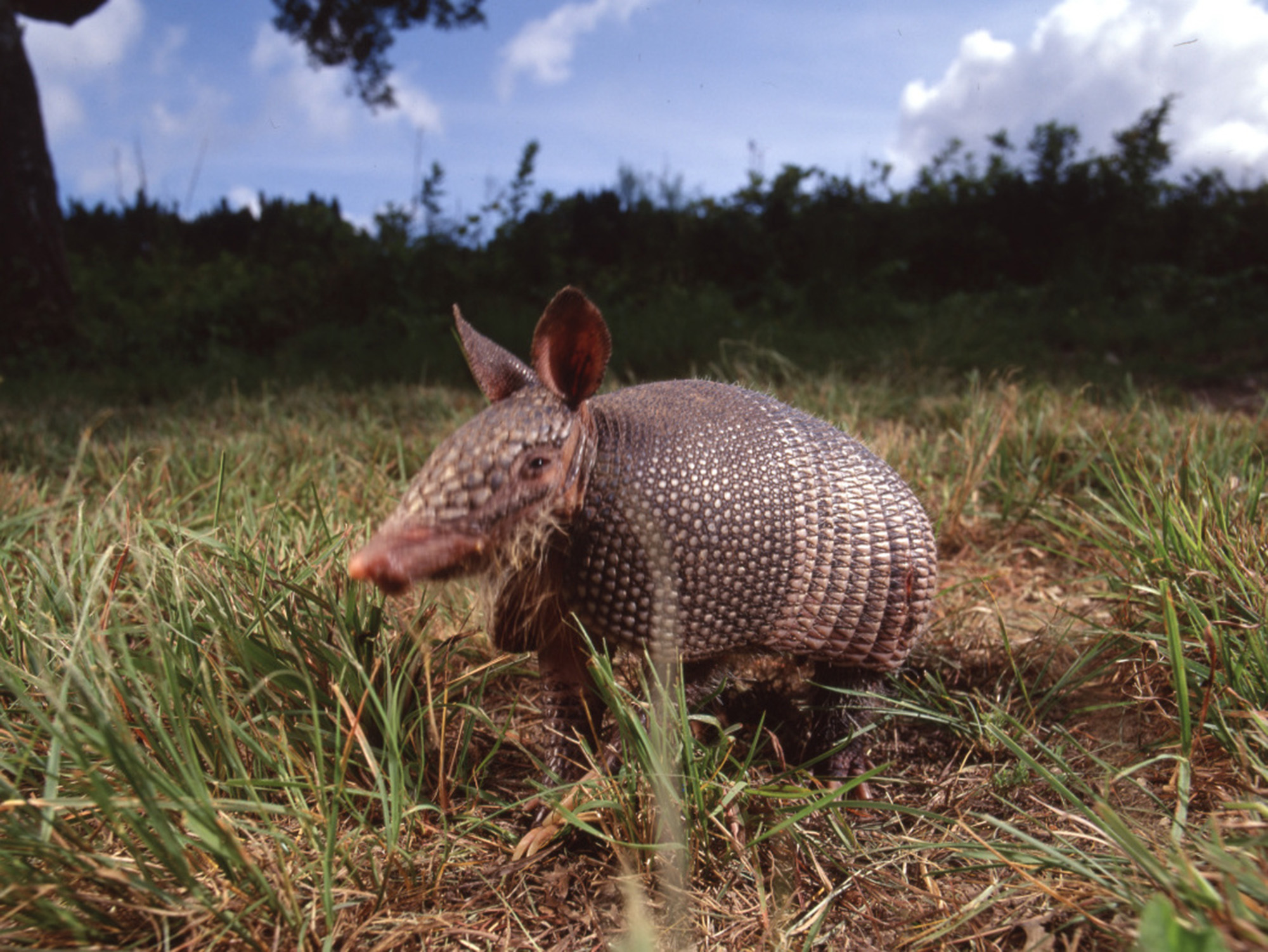
Armadillo Day honors the official state mammal and pokes fun at Pennsylvania’s annual tradition. Photo by J. Griffis Smith
Every Feb. 2, an oracle emerges from his cave to deliver his predictions to a captivated populace. This oracle is a small mammal whose species gives the day its name. By subtle gestures—as interpreted by experts—he indicates whether the country is to be blessed with an early spring or lashed by a further six weeks of winter.
For much of the country, it’s known as Groundhog Day, built around the personage of Punxsutawney Phil. In Texas, however, it’s Armadillo Day, which rests on the prophetic powers of Bee Cave Bob.
Bee Cave Bob’s career began in 2012, when a group of buddies in Central Texas—formally known as the Benevolent Knights of the Raccoon—decided to thumb their nose at the rodent-themed holiday. “We were insulted about the idea of a mangy groundhog predicting the weather of Texas,” said Terry Booth, one of the group’s founding members. “We have our own beautiful, local Texas armadillo. So, we got our own groomed up and ready to go.”
Since the first meeting in 2012, Armadillo Day has been held annually at Booth’s ranch in Bee Cave, a site on the 98th Meridian that the Texas Legislature—at Booth’s urging—designated the “West Pole” in 2007. Bee Cave Bob is placed in a small pen and is ushered from a fake culvert onto a slab of concrete painted to look like a highway, and his movements are watched by a “weatherologist.” If he goes back into the dark, Texans should layer up. If he wanders around, then warmer weather isn’t far behind. The armadillo also predicts political outcomes based on whether he wanders into the right or left lane.
“He’s been right more times than wrong when predicting an early spring,” Booth said.
To wrangle the armadillo who would become Bee Cave Bob, the Benevolent Knights looked to one of their number—Ralph Fisher, a former rodeo clown and animal trainer and rehabilitator. Fisher has handled bison, Longhorns, and coyotes for ZZ Top concerts; buzzards for countless Western films; and armadillos for films like Bernie. He also used to organize armadillo races, which is no joke; nine-banded armadillos can run faster than a human when they put their mind to it.
Though the armadillo is heavily identified with Texas, it didn’t arrive in the state until the 1880s when it crossed the Rio Grande and immigrated through the American South in the 20th century. The timing unfortunately coincides with the widespread adoption of fast cars and interstate highways, which has made the species synonymous with roadkill in popular imagination.
“Its a dangerous proposition to be an armadillo, believe me,” Fisher said. “If they’re in any kind of rural area they don’t live that long.” The second Bee Cave Bob—procured after the first passed peacefully into the great (and presumably empty) highway in the sky—is missing the back quarter of his tail, lost to a predator or roadway accident.
This year, Armadillo Day is back after two consecutive cancellations—once in 2021 due to COVID, and again in 2022 due to foul weather. The event begins at noon. It’s public, though Fisher prefers to keep it small; if you can find the West Pole Ranch in Bee Cave, you’re welcome to come around to watch the prediction, hear local musicians jam, and maybe take photos with Bee Cave Bob (the Second) himself.
It’s also a chance to join Booth and his friends to indulge in a little bit of Lone Star State mythmaking. “The whole thing is about the natural bragging rights for Texas and not allowing inferior portions of the country to usurp them,” Booth said. “It’s a Texas thing.”








